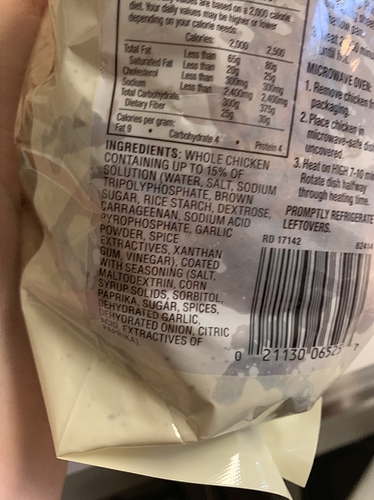Not a problem resurrecting old threads. Richard actually prefers it. That said, I hate reacting with urgency to a situation that has long since been dealt with, so I have learned to check dates—most of the time, lol!
Looking over the thread, I notice that no one actually addressed an important issue: why the nutrition label says “0g of sugar,” when the list of ingredients mentions several types of sugar.
This can trip people up, so I’ll address it. The reason is that U.S. labeling laws permit the food manufacturer to choose an arbitrary serving size, and they also permit the amount of sugar to be listed as 0g, when it is less than 0.5 g per serving. The serving size in such a case is invariably unrealistically small, so what I do is to assume the product contains 0.499999999 g of sugar per “serving,” figure out how many “servings” I am really going to be eating, and do the arithmetic. (If the label says “less than 1 gram” of sugar, I assume 0.999999999 g/serving, by the way.)
European countries also allow arbitrarily small serving sizes on nutrition labels, but then require that the contents per 100 g also be listed. This generally eliminates the type of fraud legally permitted in the U.S.
(This is one of my favourite rants, so I am surprised that I forgot to include it in my earlier post.)








 I like it. Or “<0.5g”, at least.
I like it. Or “<0.5g”, at least.

 As with most commercial foods.
As with most commercial foods.